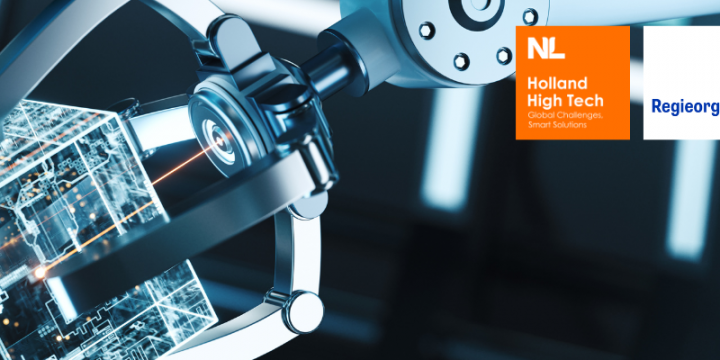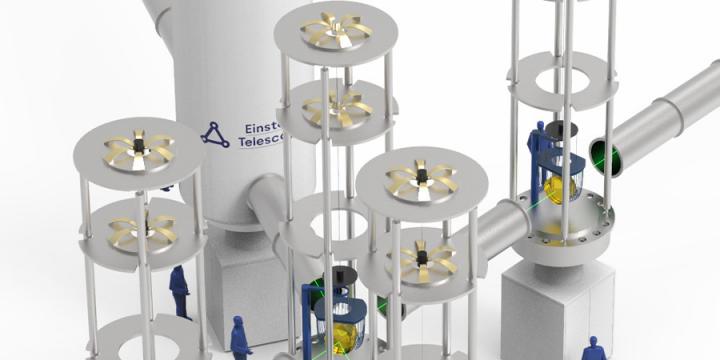From metal companies and robot builders to the automotive industry: there are plenty of opportunities for the circular economy in all sectors. The trick is to get this message across to companies, consumers and governments. This and more became clear during the roundtable meeting 'Innovation for a circular high-tech manufacturing industry', organized by Holland High Tech and the Knowledge and Innovation Agenda Circular Economy (KIA-CE). The meeting generated valuable ideas for elaborating the KIA-CE innovation programs. As of the summer, companies can apply for funding for joint research and experimental development of products, processes and services.
‘We need to work on raising awareness among companies, consumers and governments’
Upcycling with scrap from waste incineration, machines that are being repaired, and refurbishment of solar panels. There are plenty of examples of circular solutions around us. But if we want to achieve the government's interim target for 2030 - halving the amount of primary abiotic raw materials - we need to go a step further, emphasized Jacqueline Vaessen, figurehead of the Top Sector Chemistry, in her introduction. She is also chair of the Circular Economy Mission Team and thus helps to guide the KIA-CE.
Common ground
According to Vaessen, it pays for companies to invest in the reuse of materials and raw materials. “That can reduce CO2 emissions by up to a factor of four,” according to the chemical engineer. According to her, there are many areas of overlap between sectors in the transition to a circular economy. In practice, however, little has been done about this.
Jacquelien Scherpen, Captain of Science in the top team of Holland High Tech and professor of systems and control technology at the University of Groningen, emphasized in her story that the manufacturing industry has traditionally had a circular character. Think, for example, of the effort manufacturers make to extend the life of machines and other capital goods. “Innovations, for example in digital technology and revenue models, strengthen this circular character.”
It is one of the reasons why the Dutch government decided to set up a mission-driven innovation policy in 2019. The KIA CE is part of this. “We want to boost and accelerate the development of knowledge and innovation for a circular economy. To this end, we connect knowledge institutions, companies and governments from different sectors in research and innovation projects,” said Navied Tavakolly, one of the three program managers at KIA-CE, to the more than 50 participants in the room. “It is now time to give concrete substance to the agenda that we have drawn up, and we can use your ideas in that.”
Stimulating circular design
Plenty of ideas, as witnessed by the animated discussions at the four theme tables. For example, participants at Circular Design discussed issues related to the availability of materials, security of supply and the replacement of critical materials. “An important knowledge question is how we can encourage companies to achieve circular design, without this having to be imposed top-down from the government,” table chair Marieke Huis in 't Veld, program manager at the Brabantse Ontwikkelings Maatschappij, summed up the talks.
It is crucial that designers gain more knowledge about circular design. Which components and materials are in the products they work with? How high do they score on circularity? And what are the alternatives? “A label or quality mark can provide guidance,” according to the table chair. In order to develop such a quality mark, international agreements must be made about what exactly circularity entails and how you measure it.
Integrate in value chain
Circularity must become an integral part of the value chain, as emerged during the discussions at the Return and Reuse theme table. “If we continue to see circularity as something that you have to organize separately from the value chain, then it won't work. You have to give it a place in business models and think in the early stages about how things are returned, standardisation, service and management,” emphasized table chair Jeanette Levels, partner at consultancy and engineering firm LBP / SIGHT.
That's easier said than done. After all, we don't know where a lot of things come from, what exactly they contain and where they are going. “How do you determine the residual value then? And how do you then link that to a revenue model,” says Levels.
Indicate (residual) value
The same question came up in the Business models and organization section. “Forming the (residual) value of products and materials in terms of money, environmental gain, social impact and other circular benefits is important if you want to encourage companies to look beyond the financial issue,” said table chair Rien van Leeuwen, innovation supervisor at Ruysdael. “In addition, there is a need for some kind of space between new standards and collaborations, in which risky circular innovations are given a chance,” he illustrated.
Creating added value for manufacturers and customers is crucial, as emerged from the discussions at the CESI Circular Economy - Smart Industry theme table. “The question is what we can do best for this,” said table chairman Ton Bastein, specialist in raw materials and circular economy at TNO. “How do you earn money with awareness, for example of the benefits of circularity for someone's business? The business-to-business market can learn a lot from the business-to-consumer market.”
Interpreting data
With the advent of digital technology, we have more and more data at our disposal. But that doesn't necessarily mean that everyone understands them or sees their value, Bastein emphasized. “How do we ensure that chain parties with different backgrounds interpret data in the same way?”
All in all, there are still some questions to be answered on the way to a circular economy. “Especially when it comes to getting companies, consumers and governments on board in the transition, a theme that is central to our three Multi-Year Mission-Driven Innovation Programs,” noted Tavakolly. There is still a lot to gain from this. Because as one of the participants noted: “As soon as people realize that something that has broken down is not waste but a raw material for something else, it suddenly becomes a lot better with collection.”
Calls for research proposals
Tavakolly and his colleagues incorporate the ideas of the participants in the roundtable into calls for research proposals. “The first one will open before the summer, so keep an eye on our website.”





